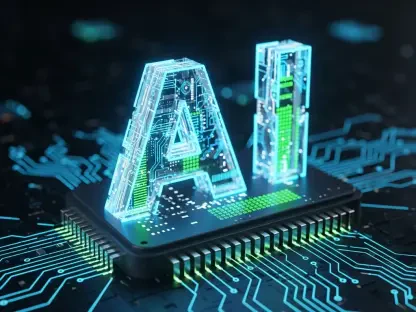Understanding the Role of AI in Software Development
Artificial intelligence (AI) and large language models (LLMs) have become indispensable assets in software development, revolutionizing how teams approach coding tasks with unprecedented speed and efficiency. These technologies enable developers to automate repetitive processes, generate code snippets, and even suggest optimizations, significantly boosting productivity across the board. The adoption of AI tools is no longer a novelty but a standard practice, reshaping the landscape of the industry as teams strive to meet tight deadlines and complex project demands.
Current data underscores the widespread integration of AI in development workflows. According to the 2025 State of AI Code Quality report from Qodo, over 80 percent of developers utilize AI coding tools on a daily or weekly basis, with nearly 60 percent employing multiple tools simultaneously. This high usage rate reflects not just reliance but a fundamental shift in how software is created, with AI becoming a core component of modern development environments.
Key players in the AI coding tool market, such as GitHub Copilot, Tabnine, and others, dominate the space by offering sophisticated solutions tailored to various programming needs. However, despite their capabilities, the importance of human oversight remains paramount. Developers must maintain accountability for the security and reliability of the output, as AI tools, while powerful, are not infallible and require consistent human judgment to ensure safe and effective deployment.
Analyzing AI’s Impact on Code Security
Emerging Security Risks with AI Tools
The integration of AI in software development introduces significant security concerns that cannot be overlooked. Industry experts have noted that even the most advanced LLMs produce incorrect or vulnerable code in nearly two-thirds of cases, highlighting a critical gap in reliability. This high error rate poses a substantial risk, especially when teams deploy such code without thorough validation, potentially exposing applications to exploits.
Over-reliance on AI for both code generation and review compounds these dangers, often fostering a false sense of security. When developers lean too heavily on automated tools without sufficient human intervention, they risk bypassing essential checks, leading to software that is prone to breaches. This trend underscores the necessity of maintaining rigorous oversight to catch issues that AI might miss.
Specific vulnerabilities often evade AI detection due to its limited understanding of contextual nuances. For instance, AI tools may fail to identify flaws in authentication or authorization frameworks, omitting critical safeguards that could prevent unauthorized access. Such oversights emphasize the need for developers to remain vigilant and not delegate full trust to automated systems.
Data and Insights on Security Challenges
Recent studies provide concrete evidence of the security concerns surrounding AI tools. The AI Impact Report 2025 from LeadDev reveals that 49 percent of software engineers express concern over security implications when using AI in development. This statistic highlights a pervasive unease within the industry about the potential for undetected vulnerabilities in AI-generated code.
Reduced human accountability further exacerbates these challenges, as it often leads to diminished diligence during code reviews. When developers assume AI has handled the heavy lifting, they may skip in-depth assessments, weakening long-term best practices for secure coding. This erosion of responsibility can have lasting repercussions on software quality and safety.
Looking ahead, the trajectory of AI tool usage suggests that security challenges will only intensify as adoption grows. Without proactive measures to address these risks, the industry could face an uptick in breaches and compromised systems. Anticipating and mitigating these evolving threats will be crucial for maintaining trust in AI-driven development processes.
Addressing Ethical and Legal Complexities
The deployment of AI in software development extends beyond technical hurdles to encompass significant ethical and legal dilemmas. A major concern revolves around copyright issues tied to the training datasets used by LLMs, which may include open-source code without explicit permission. This murky territory raises questions about the legitimacy of AI-generated outputs and potential infringement risks.
Further complicating the landscape is the distinction between human and AI learning from publicly available resources. While a human developer can study open-source libraries and create original code without legal repercussions, AI systems performing similar actions might be viewed as producing derivative works, potentially violating intellectual property rights. This disparity creates a complex ethical debate that the industry must navigate.
Legal experts, such as those from Ropes & Gray, advise caution in this evolving field, recommending that teams using third-party AI tools secure indemnification against copyright liabilities. Contracts involving AI models should allocate risks carefully to protect against unforeseen legal challenges. As judicial guidelines continue to develop, staying informed about these complexities remains essential for responsible deployment.
Building a Security-First Culture for AI Deployment
Fostering a security-first culture within development teams is a foundational step toward mitigating the risks associated with AI tools. This approach involves prioritizing security and ethical awareness at every stage of the software development lifecycle. Leadership must champion these values, ensuring that every team member understands the importance of safeguarding code integrity.
Establishing internal guidelines for AI ethics and liability protection forms a critical part of this culture. Such guidelines should emphasize traceability, visibility, and governance over AI tool usage, including the evaluation of approved tools and monitoring for unapproved ones. By setting clear expectations and outlining potential risks, organizations can better equip teams to handle AI responsibly.
Incorporating legal counsel into these guidelines adds an additional layer of protection. Recommendations often include verifying the provenance of training data to avoid copyright infringement and ensuring that proprietary software development adheres to authorized content usage. This proactive stance helps mitigate legal risks while reinforcing a commitment to ethical practices.
Best Practices for Secure and Ethical AI Use
To navigate the challenges of AI deployment, development teams must adopt actionable best practices that prioritize security and ethics. Upskilling developers on these topics is a vital first step, equipping them with the knowledge to identify vulnerabilities, understand liability issues, and adhere to ethical standards. Regular training and benchmarking can help address skill gaps and maintain high standards.
Implementing rigorous review processes for AI-generated code is equally important. Such code should undergo the same quality and security checks as manually written code, with specific attention to preventing common threats like SQL injection and cross-site scripting vulnerabilities. Adhering to established frameworks, such as those from OWASP and CERT, can guide teams in maintaining robust defenses.
Engaging developers in the creation of these best practices fosters a sense of ownership and accountability. When team members contribute to defining security protocols, they are more likely to internalize and follow them. This collaborative approach not only enhances risk management but also strengthens team cohesion around shared goals.
Future Outlook for AI in Software Development
The trajectory of AI tools in software development points toward continued growth, with emerging technologies poised to further transform the field. Innovations such as more advanced LLMs and integrated development environments could streamline workflows even further, but they must be balanced against the imperative of security. Striking this balance will define the industry’s ability to innovate without compromising safety.
Evolving regulations and ethical standards will also play a significant role in shaping AI deployment practices. As global trends push for greater transparency and accountability, development teams will need to adapt to stricter guidelines on data usage and intellectual property. Staying ahead of these changes will be key to maintaining compliance and trust.
Continuous education and adaptation will remain essential as the landscape evolves. Teams that invest in ongoing learning and remain agile in the face of new challenges will be best positioned to harness AI’s potential. By prioritizing both innovation and responsibility, the industry can look forward to a future where AI enhances productivity without sacrificing security or ethics.
Conclusion: Empowering Teams for Responsible AI Deployment
Reflecting on the insights gained, it becomes evident that human oversight, ethical considerations, and robust security practices stand as cornerstones for successful AI tool deployment in software development. The journey through various challenges underscores the necessity of maintaining a vigilant stance against potential vulnerabilities and legal pitfalls that accompany AI integration.
Moving forward, development teams are encouraged to invest in comprehensive education programs that deepen understanding of security and ethical issues. Establishing clear guidelines and fostering a culture of accountability prove vital in ensuring that innovation does not come at the expense of safety or compliance.
Ultimately, the path ahead offers a promising vision where AI serves as a powerful ally in the software development lifecycle. By committing to best practices and proactive risk management, teams position themselves to leverage AI’s capabilities fully, achieving remarkable outcomes while minimizing disruptions and safeguarding long-term success.








